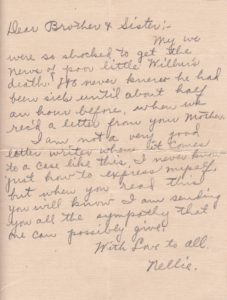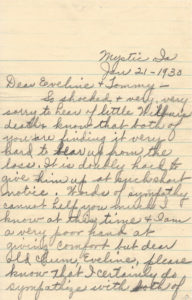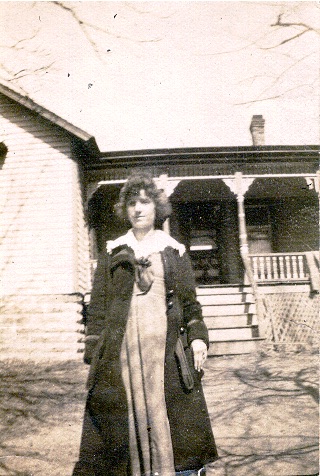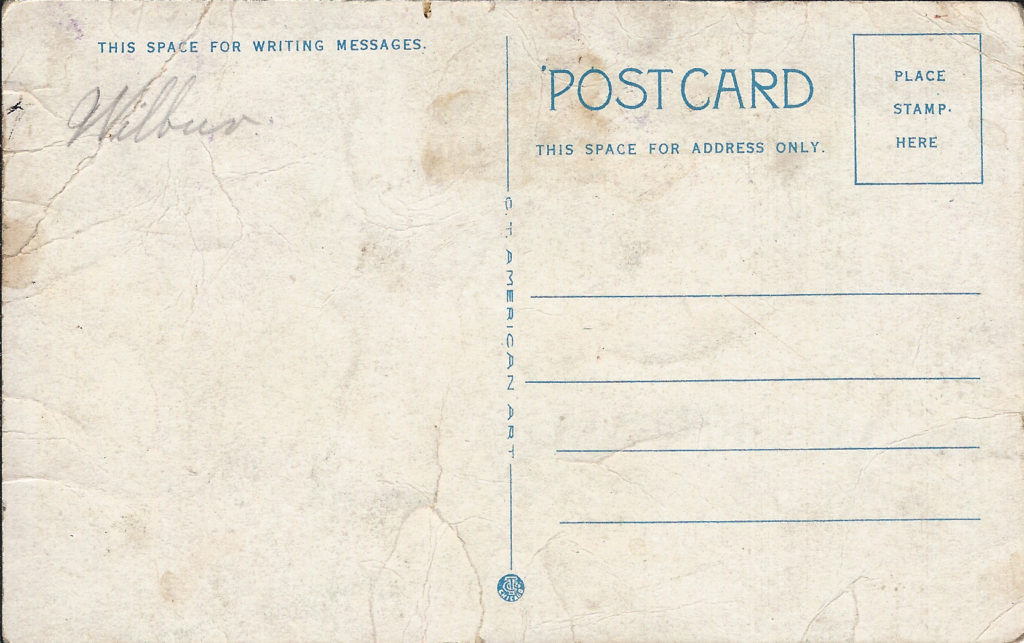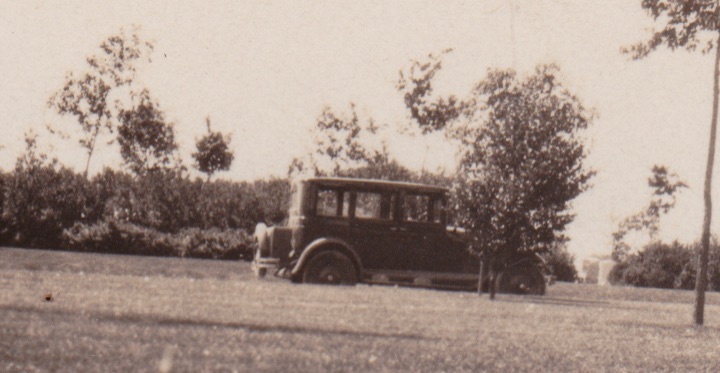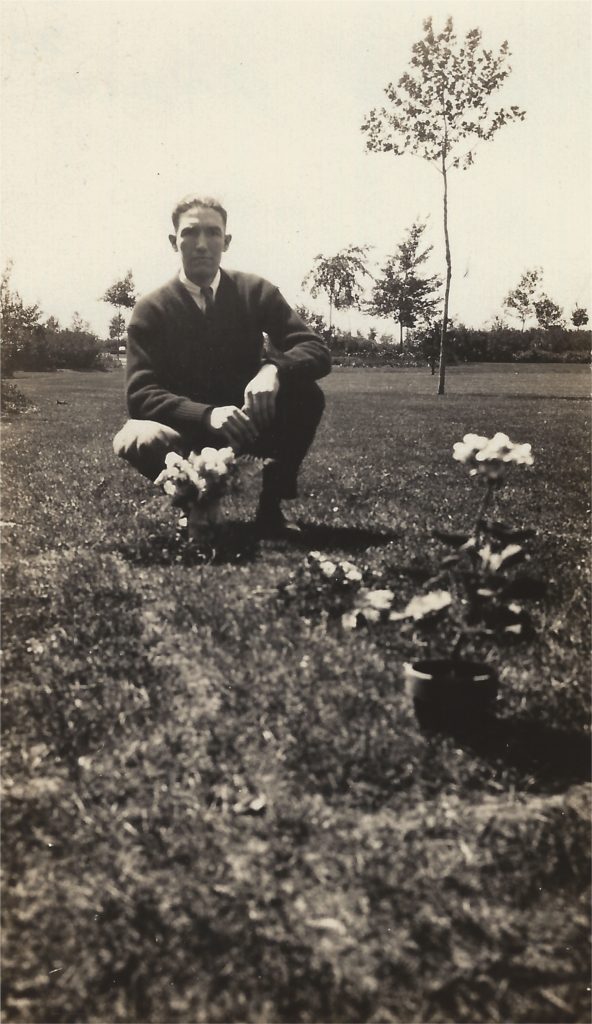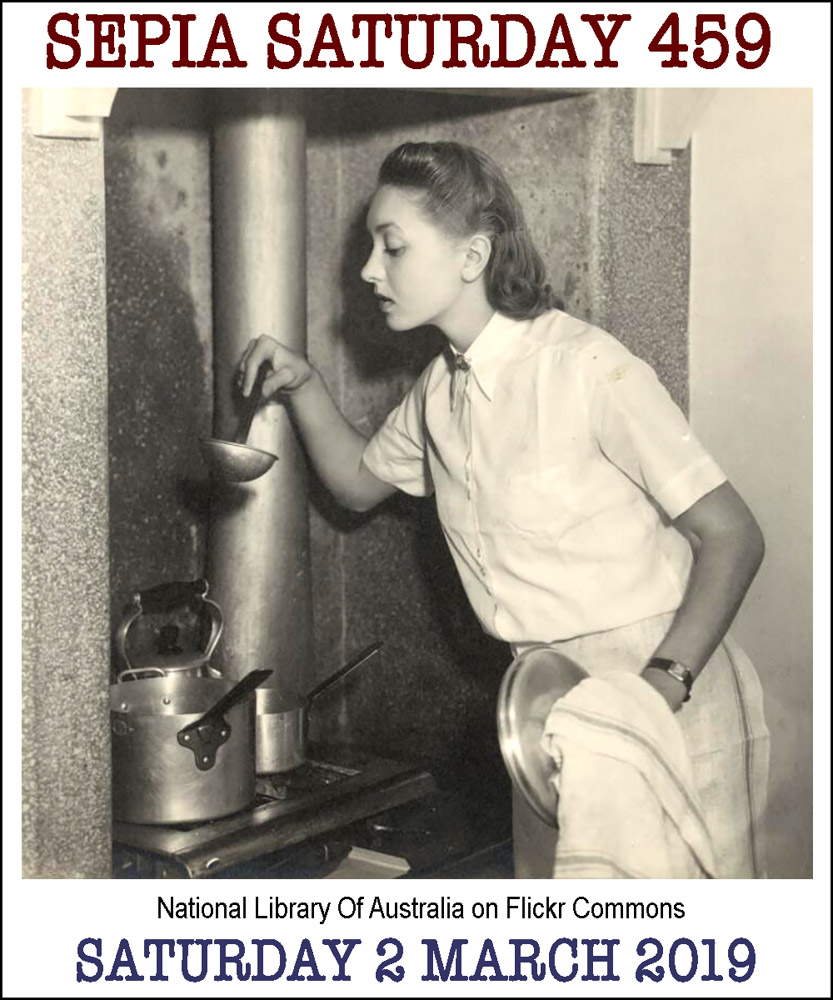The month of January and a health emergency declared in the state of Washington because of a measles outbreak had me thinking about an uncle I never knew.
This is a continuing series about my uncle Wilbur Thomas Hoskins, who died at five years of age due to complications following measles. You can catch up here:
A Tow-headed Boy
Measles
Who was with the family?
Funeral Record
The Salvation Army Offers Assistance
As the extended family learned the news of Wilbur’s death, some sat down to write words of condolence to Tom and Eveline. Two of Tom’s three siblings were with Tom and Eveline in Rockford, Illinois, so most of the letters were from Eveline’s siblings.
The first to write were Eveline’s brother, Carl Coates, and his wife, Nellie Metcalf Coates. Carl and Nellie wrote individual letters on opposite sides of one piece of stationery. Wilbur died early on the morning of January 18th. Apparently Carl and Nellie had just received a letter telling of Wilbur’s illness when they learned of his death. They sat down to write on January 19th, but instead of sending their letter to Rockford, they sent it to Joe and Alice Coates (Joe was Carl’s and Eveline’s brother), probably assuming that the family would return to their hometown of Mystic, Iowa for the funeral.
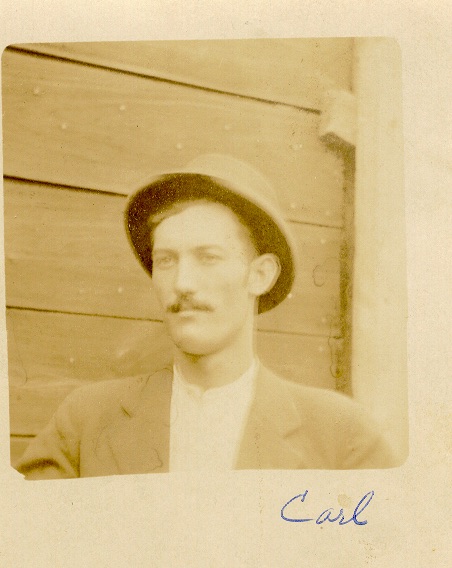
Dear Brother & Sister
We are certainly grieved to get the sad news of Wilburs Death. And my heart goes out in Sympathy for both of you. as this is an awful shock for you both. We would like to be with you at this time to help comfort you in your hour of need. but as we cannot our Sympathy is with you and Love to you all
Brother Carl.
(over)
My we were so shocked to get the news of poor little Wilbur’s death. We never knew he had been sick until about half and hour before when we rec’d a letter from your Mother.
I am not a very good letter writer when it comes to a case like this. I never know just how to express myself, but when you read this you will know I am sending you all the sympathy that one can possibly give.
With love to all,
Nellie
Alice Tingle Coates wrote a letter on January 21st. Alice was the wife of Eveline’s brother Joe. She and Eveline were in the same high school graduating class and had been friends for many years. I think they also attended normal school together.
Dear Eveline & Tommy –
So shocked & very, very sorry to hear of little Wilbur’s death & know that both of you are finding it very hard to bear up from the loss. It is doubly hard to give him up at such short notice. Words of sympathy cannot help you much I know at this time & I am a very poor hand at giving comfort but dear old chum, Eveline, please know that I certainly do sympathize with both of you in this 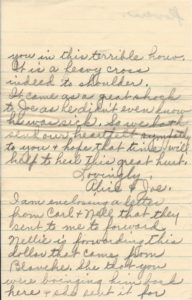 terrible hour. It is a heavy cross indeed to shoulder.
terrible hour. It is a heavy cross indeed to shoulder.
It came as a great shock to Joe as he didn’t even know he was sick. So we both send our heartfelt sympathy to you & hope that time will help to heal this great hurt.
Lovingly,
Alice and Joe
I am enclosing a letter from Carl & Nell that they sent to me to forward. Nellie is forwarding this dollar that came  from Blanche. She thot you were bringing him back here & she sent it for flowers.
from Blanche. She thot you were bringing him back here & she sent it for flowers.
The Nellie who sent the dollar for flowers was Eveline’s sister, not to be confused with her sister-in-law.
The final letter is from Eveline’s sister Blanche Coates, who looks like she might be expecting one of her several children in this photo.
Jan. 23, 1930
Dear Eveline and Tommy
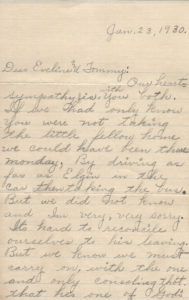 Our hearts sympathy is with you both.. If we had only know you were not taking the little fellow home we could have been there Monday, By driving as far as Elgin in the car then taking the bus. But we did not know and I’m very, very sorry. It’s hard to reconcile ourselves to his leaving. But we know we must carry on, with the one and only consoling tho’t, that he’s one of God’s little angels, he’ll never have the suffering an heartaches that we have.
Our hearts sympathy is with you both.. If we had only know you were not taking the little fellow home we could have been there Monday, By driving as far as Elgin in the car then taking the bus. But we did not know and I’m very, very sorry. It’s hard to reconcile ourselves to his leaving. But we know we must carry on, with the one and only consoling tho’t, that he’s one of God’s little angels, he’ll never have the suffering an heartaches that we have.
If there’s any thing we can do to help you financially or otherwise, don’t be afraid to let us know.
 Miles has been out of work since Christmas, but we still have a few dollars and if you kids need them your more than welcome to part of them.
Miles has been out of work since Christmas, but we still have a few dollars and if you kids need them your more than welcome to part of them.
It’s been comforting to know that Margie has been with you doing the little acts of kindness that I would have been glad to do, you have always been so good to me. An I know you realize how hard it is for me to get out with four little ones and the weather staying 26 below.
 Write when you can Honey. I know your poor heart is broken and I grieve with you & for you.
Write when you can Honey. I know your poor heart is broken and I grieve with you & for you.
Lovingly,
Blanche
Blanche and her family were living in Wheeling, Il – outside of Chicago – at the time of Wilbur’s death. She realized too late that he was to be buried in Rockford, Il and not in their home town of Mystic, Iowa.
The final bits of ephemera that I will classify as correspondence are two postcards. They are not postmarked, so may have been included with letters that are no longer with the others, or perhaps given in person at another time.

On the back is the notation
Wilbur Hoskins
From
Vivian

Vivian was Wilbur’s cousin, daughter of Tom’s sister Edna Hoskins and her husband, John Martin. Vivian and Wilbur were very close in age – she would also have been about five years old at the time of Wilbur’s death. I don’t recognize the handwriting. Maybe her mother, Edna wrote it and this was Vivian’s way to participate in expressing sadness at the loss of her cousin.
The last postcard has nothing written on the back except “Wilbur.” I have no idea why this particular postcard was chosen or who it was from. I don’t readily recognize my grandfather Tom’s handwriting like I do my grandmother’s, but this does remind me of his writing.

This is my contribution to Sepia Saturday. Please visit other participants who likely responded to the prompt with dancing and good times.
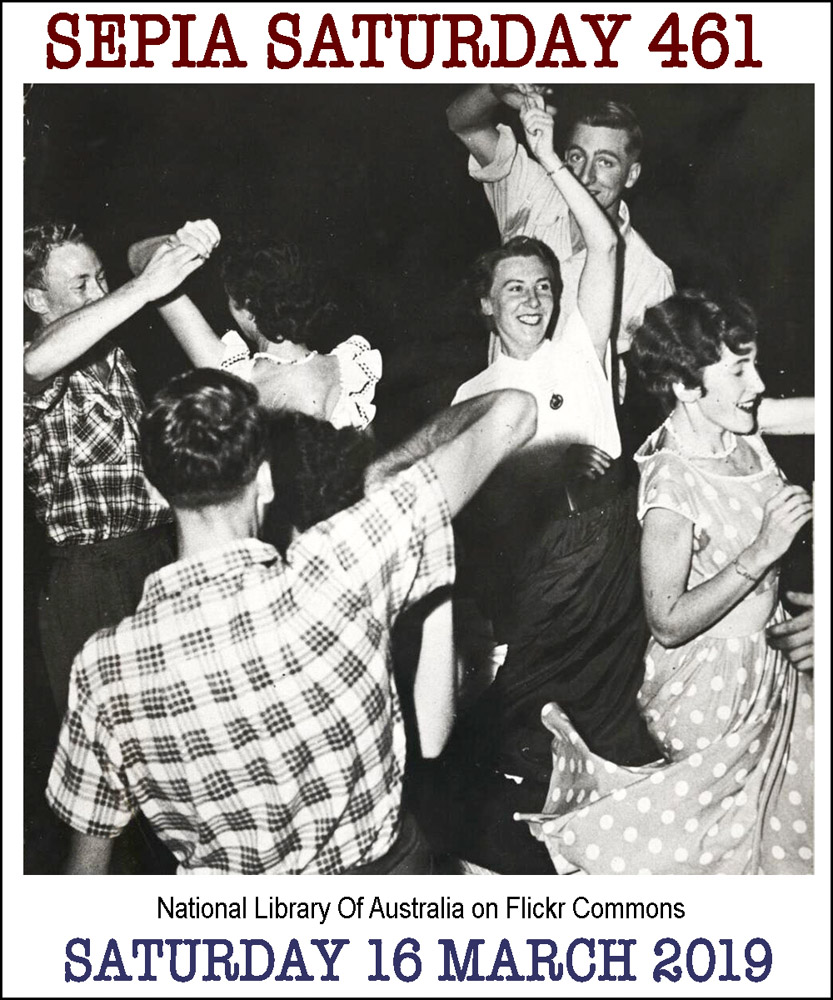
Sepia Saturday provides bloggers with an opportunity to share their history through the medium of photographs. Historical photographs of any age or kind become the launchpad for explorations of family history, local history and social history in fact or fiction, poetry or prose, words or further images. If you want to play along, sign up to the link, try to visit as many of the other participants as possible, and have fun.


